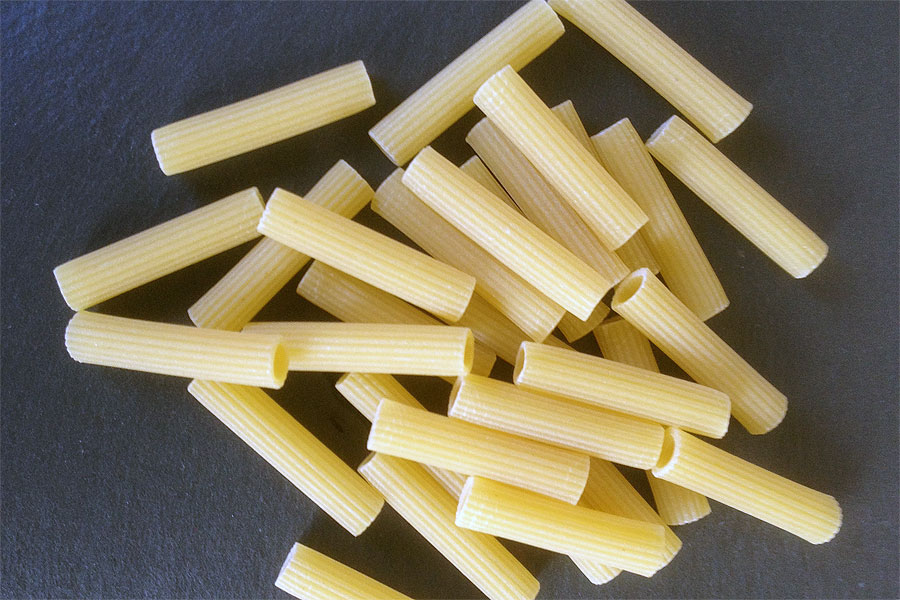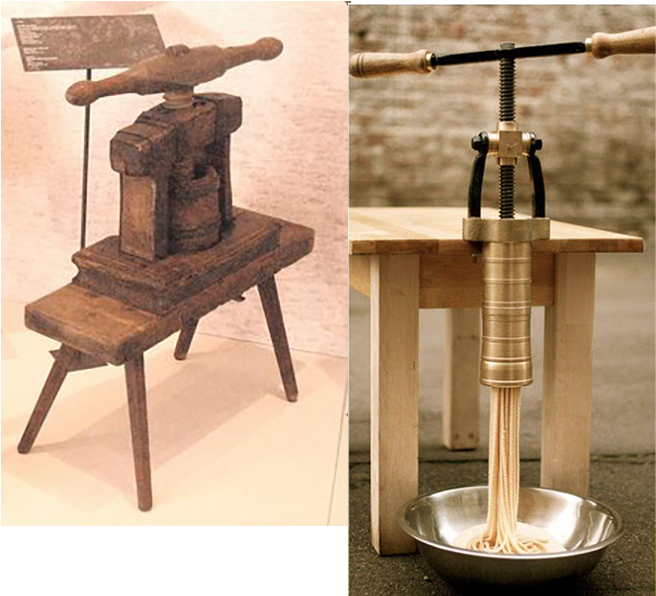Other Names: |
Region:Venice |
Made with:Flour, eggs, water, and salt.
|
The photo above is of Sedani, Gargati is the same without the ridges.
About:Gargati pasta boasts a rich history and unique characteristics within Italian cuisine, particularly the Veneto region. Here’s a breakdown of its interesting background and how it’s traditionally used: Hailing from the Veneto region in northern Italy, Gargati is a fresh egg pasta with a unique shape. Using a traditional tool: Gargati was shaped using a hand-operated pasta extruder called a “bigolaro,” invented in the 1600s. This tool was also used for another popular Venetian pasta, bigoli. [Bigolaro image search] While bigoli remains common, Gargati is less frequently seen outside the Veneto region. Today, bigolaros machines are not as common in households, with production shifting to restaurants and specialty shops. A short, ridged tube with a small, hollow center. It somewhat resembles sedani or long maccheroni, but with a rougher, textured surface due to the bigolaro. The ridges and rough texture are key features. They allow sauces to cling effectively, maximizing flavor in each bite. The hollow center adds another dimension, offering a little pocket for flavorful sauce to hide in. Traditionally, Gargati is served with “il consiero,” a special type of spring ragu from Vicenza in Veneto. This ragu features a combination of meats (often including lardo, cured pork fatback) and spring vegetables like peas and asparagus. However, Gargati’s versatility allows it to be enjoyed with various other rich and chunky sauces that can capitalize on its shape and texture. |
||
Source:
|
Photo Credit: |

